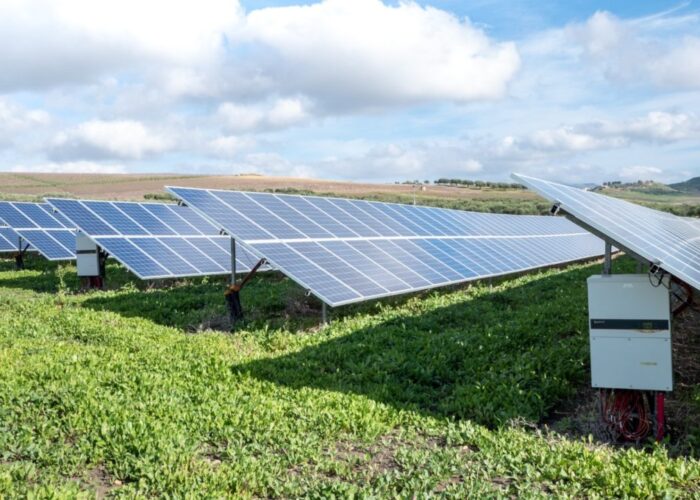The largest solar installer in the US SolarCity dropped a major bomb in reporting third quarter financial results as it trimmed 2015 installation targets and said it would focus on cost reductions over growth in 2016, ahead of the potential step-down of the investment tax credit (ITC).
SolarCity said it expected to install 280MW to 300MW in the fourth quarter, implying full-year installs of 878MW to 898MW, compared to previous guidance of 920MW to 1GW.
Unlock unlimited access for 12 whole months of distinctive global analysis
Photovoltaics International is now included.
- Regular insight and analysis of the industry’s biggest developments
- In-depth interviews with the industry’s leading figures
- Unlimited digital access to the PV Tech Power journal catalogue
- Unlimited digital access to the Photovoltaics International journal catalogue
- Access to more than 1,000 technical papers
- Discounts on Solar Media’s portfolio of events, in-person and virtual
The shortfall was said to be partially due to expected winter weather impacting installs, notably on commercial projects and bottlenecks on permitting ahead of the holiday season at the end of the year.
However, SolarCity said that after nine years of 80 to 90% growth it would lower growth projections in 2016 and aim to be cash flow positive by the end of 2016.
The company set an installation growth target of around 40% for 2016, which implies an installation target of around 1.25GW.
In its third quarter earning call, Lyndon Rive, SolarCity’s CEO said: “Now that we've achieved scale, we as an executive team and the board have decided to focus on cost reduction and being cash flow positive by the end of 2016. With this new focus, we're going to reduce our growth rates to roughly 40% in 2016. Now for company that 40% is still a very big growth rate, but this will enable us to focus on profitable installation, the more profitable installations as well as reducing our customer acquisition costs.”
The significant change in SolarCity’s business strategy has come as major surprise, especially when the US market has been booming in 2015 and expected to grow significantly further in 2016 ahead of the potential end to the ITC.
According to GTM Research PV installations will hit a record 7.7GW in 2015, up 24% from 2014. That figure could easily be double in 2016.
With the expected 30% ITC withdrawn completely for the residential market and reduced to 10% for the commercial market, SolarCity is reducing costs across the board from sales acquisition costs, optimised warehousing to BOS of installations with further product introduction to enable it to continue to be an installation cost leader post ITC in 2017.
Although the cost reduction strategy is logical and intimated in SolarCity’s first quarter earnings call, the slow down in growth was not.
Brad Buss, SolarCity’s CFO said in the first quarter conference call in response to a question on the ITC impact: “I think the bigger point though which we will talk more in the future is growth where we are going with our cost target as well as our efficiencies, the technology gains and even in a post dropdown ITC assuming that happens we are still going to have [a] very viable business, probably one of the few that will be that strong and I think you will see us continue to grow potentially even faster with that headwind out there.”
One of the issues that could be behind SolarCity’s reduced growth projections in 2016 could be related to difficulties in accessing funds from the stock market and financial institutions, given the significant sell-off in yieldcos of other PV energy providers since the last quarter, which was a primary source of funding for SolarCity, especially tax equity investors.
SolarCity has around US$400 million in cash and cash equivalents and therefore the drastic slowdown in growth and greater emphasis on cost reductions could be behind the strategy change.
The company also said where possible in certain US states it would raise prices for its leases and PPAs in the first quarter of 2016 by US$0.25 to US$0.01 a kilowatt hour.
The slowdown in installations also puts a stop to further expansions across the US, though its move by acquisition into the Mexican market would be retained and grow organically. It also puts some further perspective to SolarCity’s recent withdraw of its BOS subsidiary, Zep Solar from the UK market. As far as further international expansions this would seem to be a potential post ITC issue.
The slowdown also means that SolarCity’s aim of 1 million customers by 2018 is in doubt.
Financial results
SolarCity reported installations totalling 256MW in the third quarter, record low cost of US$2.84 per Watt, and generated incremental ‘Economic Value Creation’ of US$239 million for its equity shareholders.
This demonstrated an overall 86% year-over-year increase in installations and a residential market increase of 69% year-over-year.
The company booked 345MW of new installations and 35,535 new net customers in the quarter.
Sales costs increased quarter-over-quarter to US$0.64 per Watt in part due to continued investment in sales as well as a ~US$0.03 per Watt increase from the one-time change on reducing its cancellation policy from 120 days to 90 to reduce administration costs and focus on shortening time from customer acquisition to installation, which currently averages around 90 days for non-active accounts.
R&D costs were reported to have increased again over the previous quarter to US$17.7 million primarily due to investments in its PV module, cell, battery and software initiatives.
GAAP revenue increased 95% year-over-year to US$113.9 million, driven by increased installations and high system performance, according to the company.
GAAP gross margin was 22%.
Guidance
SolarCity guided fourth quarter installations in the range of 280MW to 300MW and revenue from Operating Lease and Solar Energy Systems Incentives of US$70 million to US$76 million and Solar Energy System Sale revenue of US$30 million to US$32 million. Total fourth quarter revenue is in the range of US$100 million to US$108 million.







